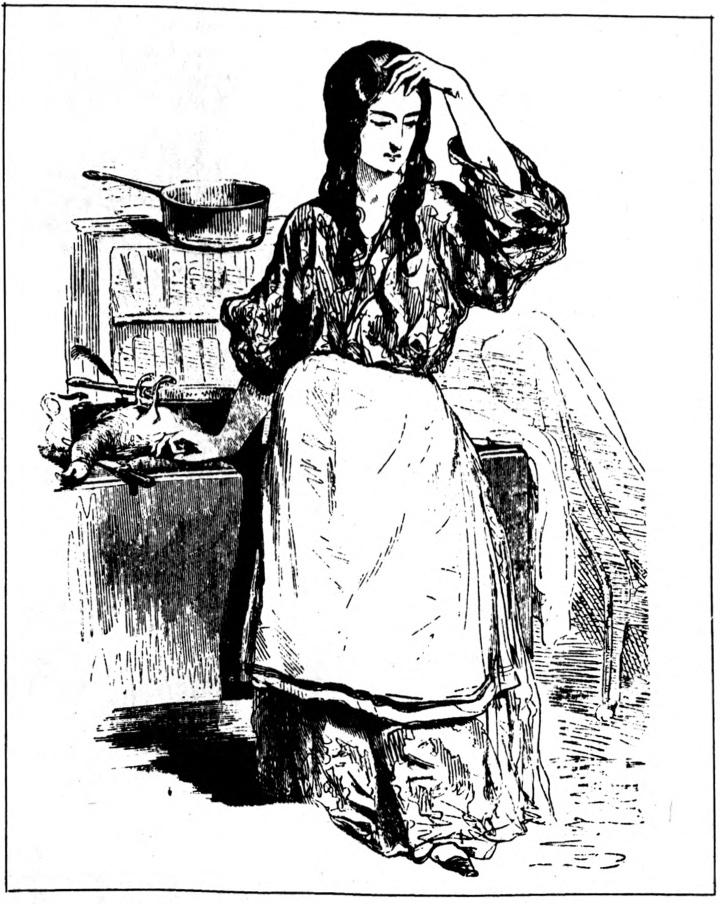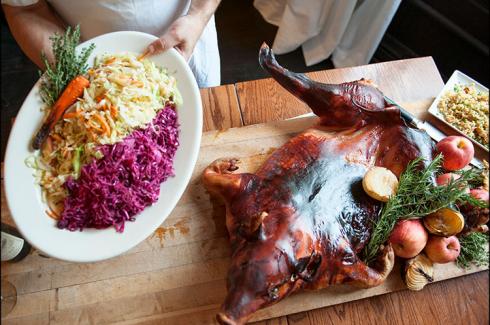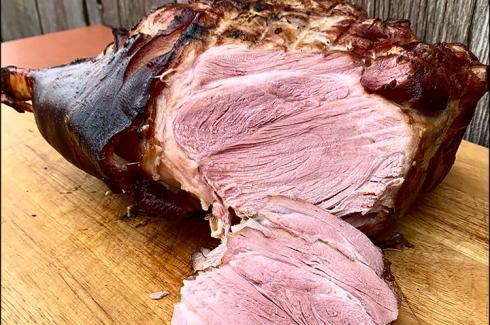“True genius always looks simple, and the best of creations are 'obvious.'" — Rudolph Chelminski, “The French at Table.”
Ah, but would we still be up in the air without Isaac Newton’s grasp of the “obvious” law' of gravity, or Mr. Fulton and his steamboat, or for that matter, Mr. Hershey and his chocolate bar? (Or Cole Porter?) French cuisine as a distinct and original school of cookery, and not imitation Venetian, only came to be in the reign of Louis XIV. All those now famous “obvious” dishes of French “women’s cookery” {la cuisine de la femme) such as coq au vin, blanquette de veau, and cassoulet were still waiting to be perfected in the kitchens of generations of instinctually fine home cooks.
Coq au vin and poulet a la creme are two of the bedrock creations that have always graced the French table in solid, comfortable bourgeois homes, each recipe a family secret. Alas, these have seldom been translated into restaurant dishes with any consistent degree of success. Although fairly simple, these two chicken dishes require ingredients very carefully chosen and handled. They are not at all “make do” dishes but the sort of thing planned for a good Sunday dinner and served with a decent bottle of wine thoughtfully selected to go with the dish at hand.
Poulet a la Crème
Chicken in a cream sauce may sound unexciting, but I assure you it is one of the most endlessly satisfying dishes in the formidable repertoire of French bourgeois cooking. As old stewing fowls have become so hard to find, I have altered my old recipe from “Good Cheap Food” (1973) to make use of the young, commonly obtainable, roasting hens of about four to five pounds. This is an easy dish to make and an especially good one to make in two stages. Serves four to six.
1 roasting chicken, 4 1/2 to 5 lbs.
2 Tbsp. butter
2 or 3 large carrots, scraped and sliced
2 medium onions, peeled and sliced
2 fat cloves garlic, mashed
1 large bay leaf
Couple of sprigs of parsley
3 or 4 quarts of water or light
chicken broth
Pinch of dried thyme
Pinch of dried tarragon
The washed giblets
Salt and pepper
Preheat oven to 325 degrees Fahrenheit.
Wash the chicken and remove the giblets from the cavity. Look it over and remove any quill stumps with tweezers. Tie the wings to the body and tie the legs down as far as possible because they must be submerged in broth while the breast is exposed only to steam. Rub the breast well with a little softened butter.
Oval, Deep Pot
The type of pot is really important here: It should be rather narrow, oval, and deep enough to allow the chicken’s legs to be covered with stock. Melt the butter and put in the carrots, onions, garlic, bay leaf, and parsley. Stir them around, then put the chicken on top of the vegetables. Pour the heated broth (it can be canned or made from bouillon cubes) or water around the chicken until it covers the legs. Put in the thyme, tarragon, pepper, and giblets (except the liver, which makes the broth muddy looking). Bring it to a simmer and salt it lightly (how much will depend greatly on whether you have used broth or water).
Seal the pot with foil, put on a heavy lid, and set it in the lower third of the oven for about one hour. After 15 minutes have elapsed, check to see that the liquid is merely bubbling gently. Fast boiling will evaporate the broth and make the chicken dry and worthless. When the chicken is tender and the juice runs clear when the thigh is punctured where it joins the body, it is done.
Take the chicken from the pot, strain the broth into a bowl, and discard the vegetables and giblets (or give them to the dog or cat — it’s a nice poule au pot for them). Refrigerate the broth and, when the fat congeals, lift it off and save it for frying — especially potatoes or onions. (If there isn’t time for this step, skim off as much fat as you can.) Pull the skin off the chicken and take the meat from the bones, keeping it in fairly large pieces. This is most efficiently done with your fingers. Pack the meat into a bowl and cover it lightly to keep it moist. If you propose to keep some of the meat for another meal, slosh some broth on it.
Sauce for Poulet a la Crème:
4 Tbsp. chicken fat
5 Tbsp. flour
2 cups hot chicken broth
1/2 cup heavy cream
Squeeze of lemon juice
Salt and pepper to taste
1/2 cup sliced cooked mushrooms
2 Tbsp. dry sherry or Madeira (optional)
Melt the chicken fat in a heavy saucepan. Stir in the flour and cook, stirring constantly, for one or two minutes. Off heat, dump in the boiling broth, whisking rapidly. Return the sauce to the heat and whisk and taste as you add the lemon juice, salt and pepper, and wine, if used. When the texture and flavor please you (you can thin the sauce with broth if you prefer), stir in the mushrooms and chicken. Serve on a bed of rice cooked in some of the chicken broth. Sprinkle with chopped parsley. Tiny peas are good with this and so is a spinach salad.
Variation: For an all white meat poulet a la creme, use two whole chicken breasts with skin and bone attached to give needed flavor. You must use chicken broth and not water as chicken breasts cook in too short a time to allow for the development of much flavor in the stock. Prepare the dish as above, reducing the broth to two quarts, which is sufficient to cover the breasts by about two-thirds.
After they are done, in about 30 minutes’ time, let them cool in the broth for half an hour, then skin and bone them. Cut the meat into large serving pieces and prepare the sauce as above. This might be served on some fresh egg noodles such as fettucine or those curly noodles called “klops.” The sauce should not be too thick, but neither should it run all over the plate. When adding the broth to the sauce, be sure to control this factor.
Coming attraction! Coq au vin. There isn’t space in this column for this delightful dish which seems to be enjoying a most welcome renascence in some New York restaurants. You do not really require a year-old rooster with bones hard enough to crack an axe as has been intimated in some recent culinary news.





